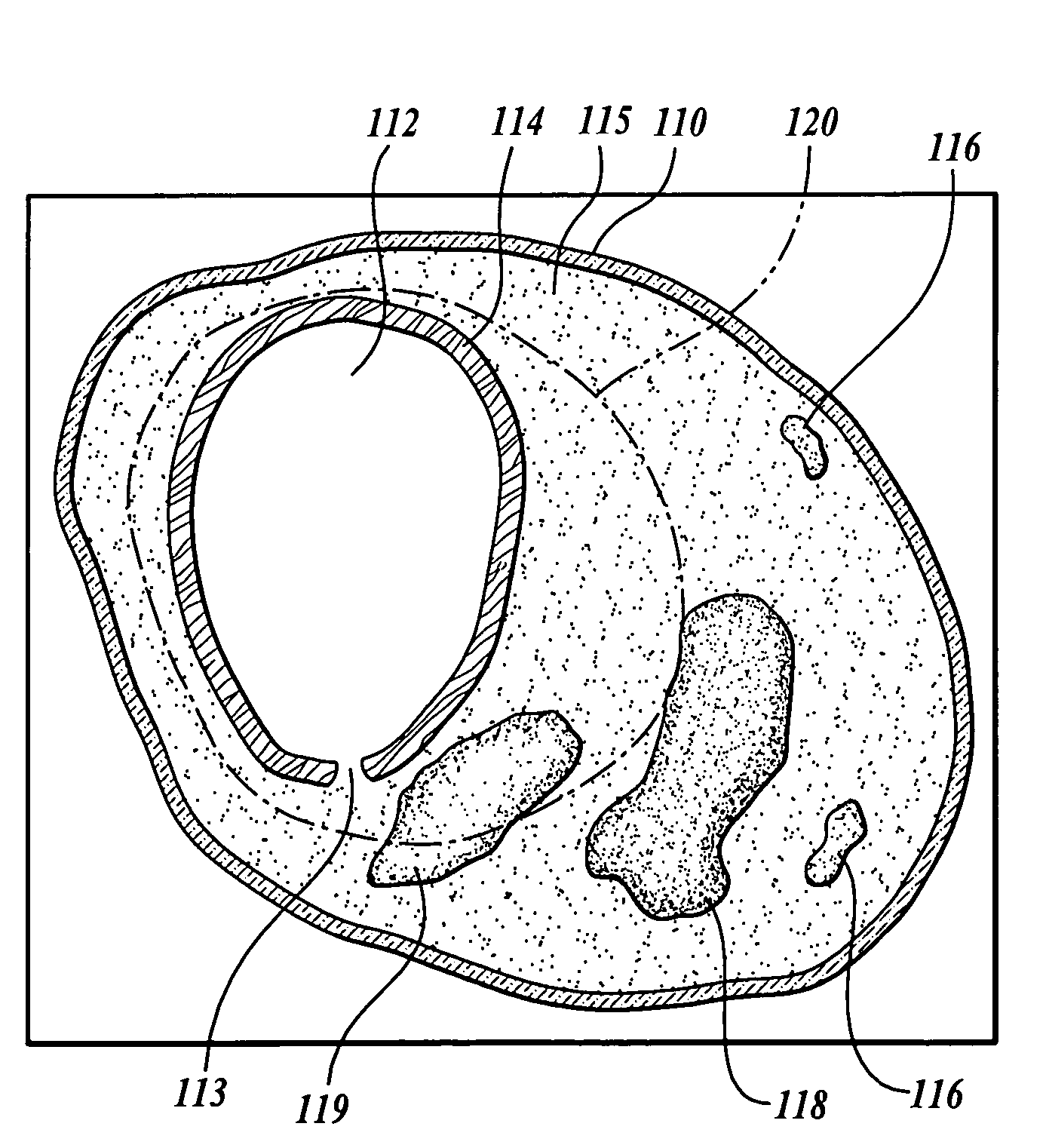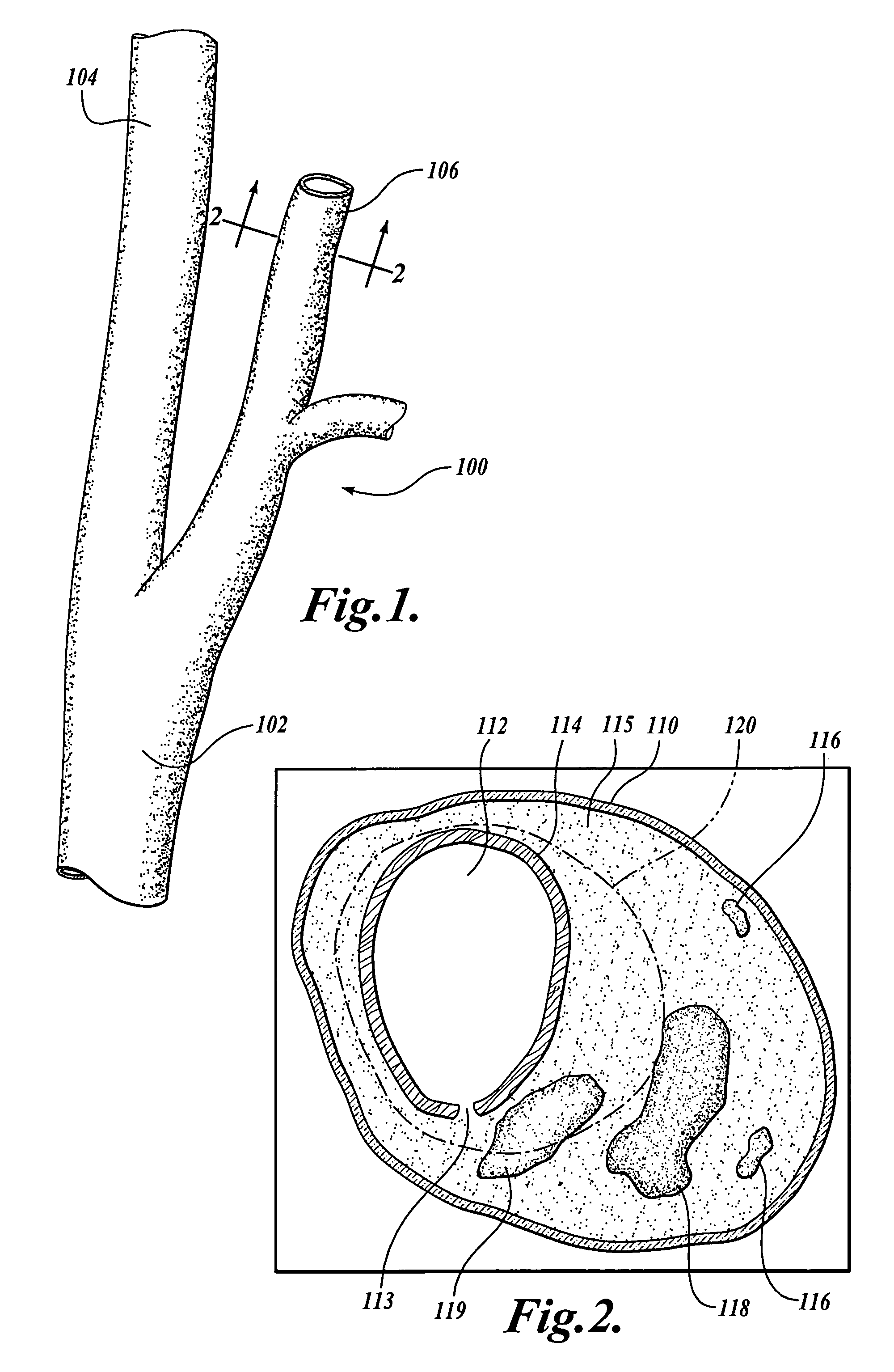Method and system for atherosclerosis risk scoring
a risk scoring and atherosclerosis technology, applied in the field of atherosclerosis risk scoring, can solve the problems of increasing mortality and morbidity worldwide, serious damage can occur, and the risk is generally associated with more serious risk
- Summary
- Abstract
- Description
- Claims
- Application Information
AI Technical Summary
Benefits of technology
Problems solved by technology
Method used
Image
Examples
Embodiment Construction
[0019]Histological studies in various vascular beds have established that plaque tissue composition and distribution may strongly influence its clinical course and the likelihood that an atherosclerotic deposit will precipitate a clinical event. For example, a thin fibrous cap covering a large, lipid-rich necrotic core appears to be a clear marker of vulnerable plaque. The “fibrous cap” is a distinct layer of connective tissue that typically covers the lipid core of a plaque deposit. The fibrous cap generally comprises smooth muscle cells in a collagenous-proteoglycan matrix, with varying degrees of infiltration by macrophages and lymphocytes.
[0020]A thinning fibrous cap indicates weakened structural integrity and possible future rupture that may lead to an embolic event. In a study of patients using carotid magnetic resonance imaging (“MRI”) to image a portion of the carotid artery prior to undergoing a carotid endarterectomy, the prevalence of fibrous cap rupture, juxtaluminal hem...
PUM
 Login to View More
Login to View More Abstract
Description
Claims
Application Information
 Login to View More
Login to View More - R&D
- Intellectual Property
- Life Sciences
- Materials
- Tech Scout
- Unparalleled Data Quality
- Higher Quality Content
- 60% Fewer Hallucinations
Browse by: Latest US Patents, China's latest patents, Technical Efficacy Thesaurus, Application Domain, Technology Topic, Popular Technical Reports.
© 2025 PatSnap. All rights reserved.Legal|Privacy policy|Modern Slavery Act Transparency Statement|Sitemap|About US| Contact US: help@patsnap.com



